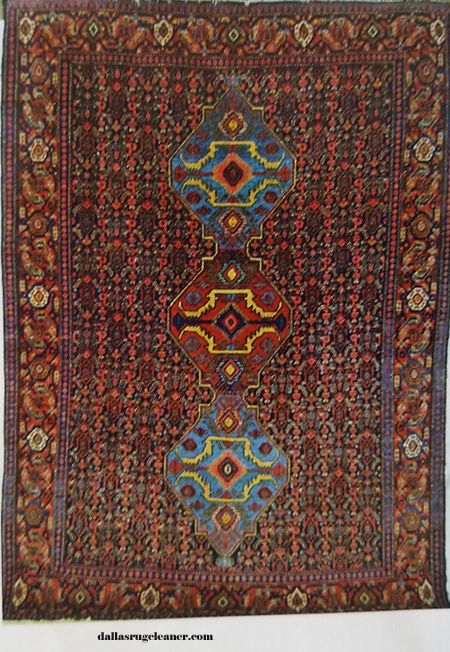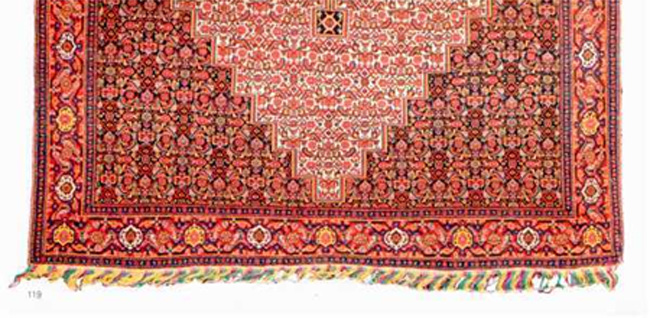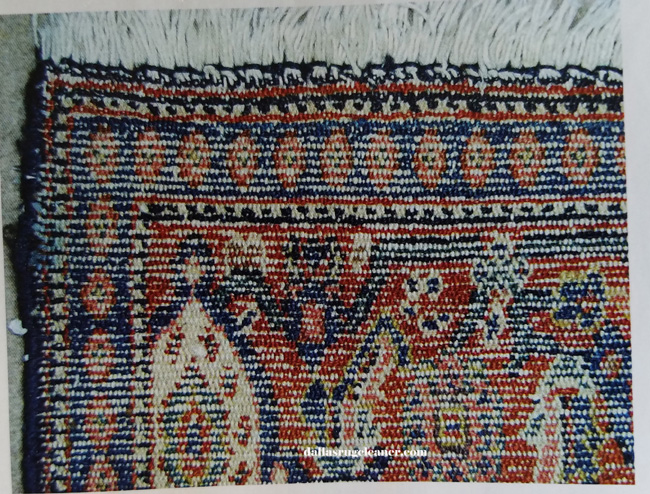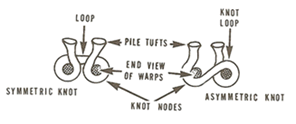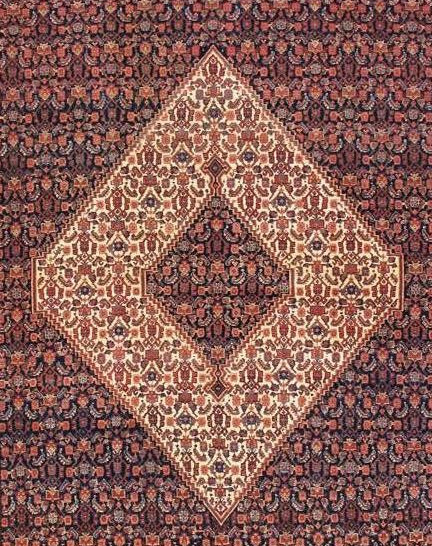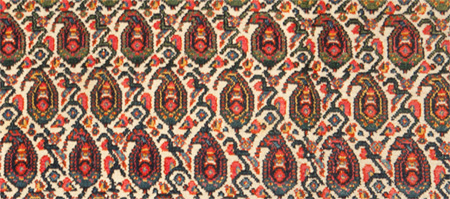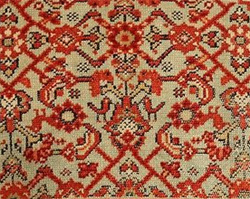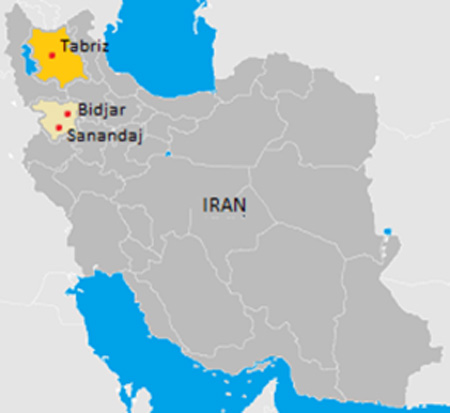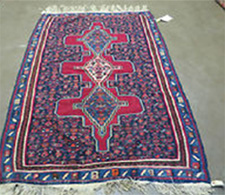Senneh Oriental Rugs
Senneh oriental rugs (Senna, Seneh, Sehna, Sinneh, etc.) originated in what is now the city of Sanandaj and surrounding areas. The Senneh speaking Kurdish people living there had a long-established weaving tradition.
Sanandaj was formerly known as Senna or Senneh and is located in Iran in the western part of the province of Kurdistan. It is considered the capital of Kurdish culture.
The economy has been supported by the production of rugs, along with animal hide processing, grain and sugar milling, and wood and metal fabrication.
The Kurdish people of this weaving area are quite different from other areas of Iran as can be exhibited by their colorful dress, including the traditional baggy pants of the men. The city used to be an important economic hub but is not as important today.
SENNEH ORIENTAL RUGS-UNIQUE WEAVING FEATURES
FOUNDATION
Senneh oriental rugs are unique, not as much for their beautiful and intricate designs, but for the meticulous weaving technique of the Kurdish weavers. This is very much evidenced in the foundation of the rugs.
Unlike most rug foundations which have straight warps (up and down foundation cords) with wefts (side to side foundation cords) interlacing the warps, Senneh rugs have just the opposite, with a foundation of straight wefts and the warps interlacing the wefts. The term for this unusual weave in Persian is 'Sennehbaf' or 'Sennah Knotted.'
The Senneh rug is a single-wefted rug (one weft cord between knots) and the wefts are larger than the warps, unlike most weaving. The foundation typically contains cotton warps and wefts and the pile is wool. Even the wool yarn is unique in that it is ultra-fine and spun very tightly, producing a high twist.
Occasionally, antique Senneh rugs knotted on silk foundations can also be found. The silk will be dyed in a variety of shades, giving a rainbow-like appearance to the fringes. These are sometimes called polychrome fringes. The colors can include purple, red, ivory, yellow, blue, and others.
Another unusual feature found in these rugs is the way the knots are compacted. The nodes come together making one bump. Because of the resulting roughness, the back of these rugs are very often compared to sandpaper.
KNOT
Surprisingly, the knot is the symmetric Turkish, not the asymmetric Persian knot (also known as the Senneh knot). The Senneh oriental rug is named for the dialect of the weavers rather than the type of knot used.
DESIGN
These rugs come in a range of medallion and allover patterns that are somewhat geometric. Motifs such as rhombs, mir-e botehs and Herati are common. The borders are very finely detailed and may often contain paired arabesque motifs known as ‘turtles.’
ENDS
The ends are finished with a plain kilim at the bottom of the rug with no fringe and a narrow kilim with a plain or knotted fringe at the other end.
SIDES
The sides are finished with a single cord overcast in wool.
COLORS
The predominant colors are dark red with ivory as a contrast. Most typically, the background colors are cherry red, navy, black, brown, ochre, and beige. Motif colors are usually yellow, red, light green, orange and white. Newer Senneh rugs can also contain green, blue and brown.
SIZES
These rugs were often produced in small and mid-sized or runner sizes, but room-sized ones could be found as well. They are currently only produced in a few throw-rug sizes and even fewer room sizes.
SENNEH and BIJAR RUG COMPARISONS
Nearby Bijar and also Tabriz weavers often attempted copies of the Senneh designs. (Senneh rugs preceded the Kurdish Bijar rugs which first appeared in the late 19th century.)
Though Senneh and Bijar rugs have similar designs, a major difference is Bijar rugs are very thick, sturdy, and heavy while Senneh rugs are very light, thin, and delicate. Senneh rugs are usually smaller than the Bijars as well.
Additionally, antique Bijar rugs are known for their sophisticated designs and color harmony, while the antique Senneh rugs are known for the fineness of their weave and the subtlety of colors, as well as the quality of the drawing.
SENNEH KILIMS
Senneh is also known for its flatwoven kilim. A kilim is a rug woven in a tapestry-like construction which produces a flat surface rug without a raised pile. The kilim style of Senneh rug is considered one of the best kilims in Iran.
The Senneh kilim is a type of slit flat woven tapestry in which slits are formed at each color change. Each time the pattern requires a different color, the previously used colored weft is turned back and the new color is begun on the adjacent warp thread.
The Senneh kilims have borders that go around the ends, a design element that is usually only found in pile rugs. These kilims are densely ornamented with curvilinear design making them totally different from the geometric patterns of the kilims of other nomadic tribes.
SENNEH RUGS TODAY
Antique Senneh rugs are considered the most sophisticated of Kurdish rugs. They are rare and quite expensive. They are very distinctive and finer than the Senneh rug of today.
Senneh Oriental rugs are generally not chosen by India to copy. Their designs are too finely drawn and don’t work well with the weaving techniques of India which generally contain fewer knots per square inch.
"The Cleanest Clean You've Ever Seen."
by
ABC Oriental Rug & Carpet Cleaning Co.
130 Cecil Malone Drive Ithaca, NY 14850
607-272-1566
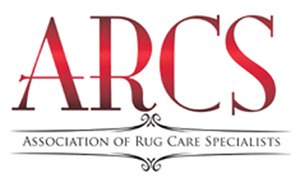
ABC Oriental Rug & Carpet Cleaning Co.
is a FOUNDING MEMBER of the
Association
of Rug Care Specialists.
"To Teach, Cultivate and Advance the Art and Science
of Rug Care"
ABC
Carpet & Rug
Spotting Guide
Learn how to remove spots with ordinary household solutions
Sign up below to gain access to your complementary Spotting Guide from ABC.
Registering your email address guarantees you will be notified whenever discount savings coupons become available.
Oriental and Area Rug Washing at ABC Oriental Rug
Rugs on the wash floor are gently scrubbed before thorough rinsing.
Gentle scrubbing continues. Note the wringer in the background-the next step in the washing process after rinsing.
After thorough rinsing, the rug is sent slowly and carefully through the wringer to take out as much of the water as possible before being hung on racks in the drying room.
Rugs are hung on a rack in the temperature controlled drying room until completely dry.
